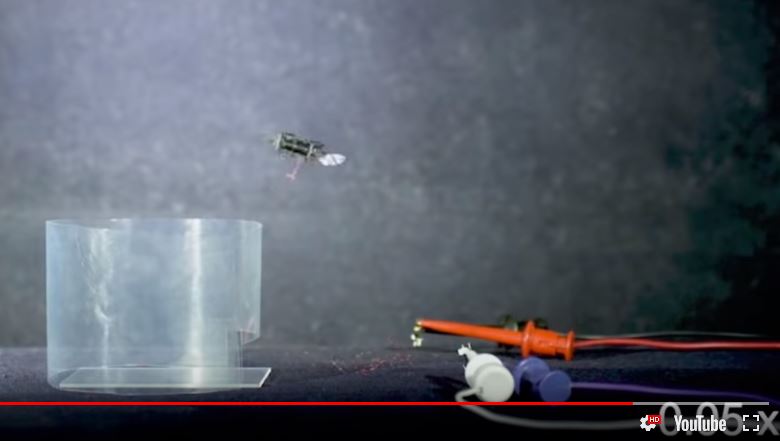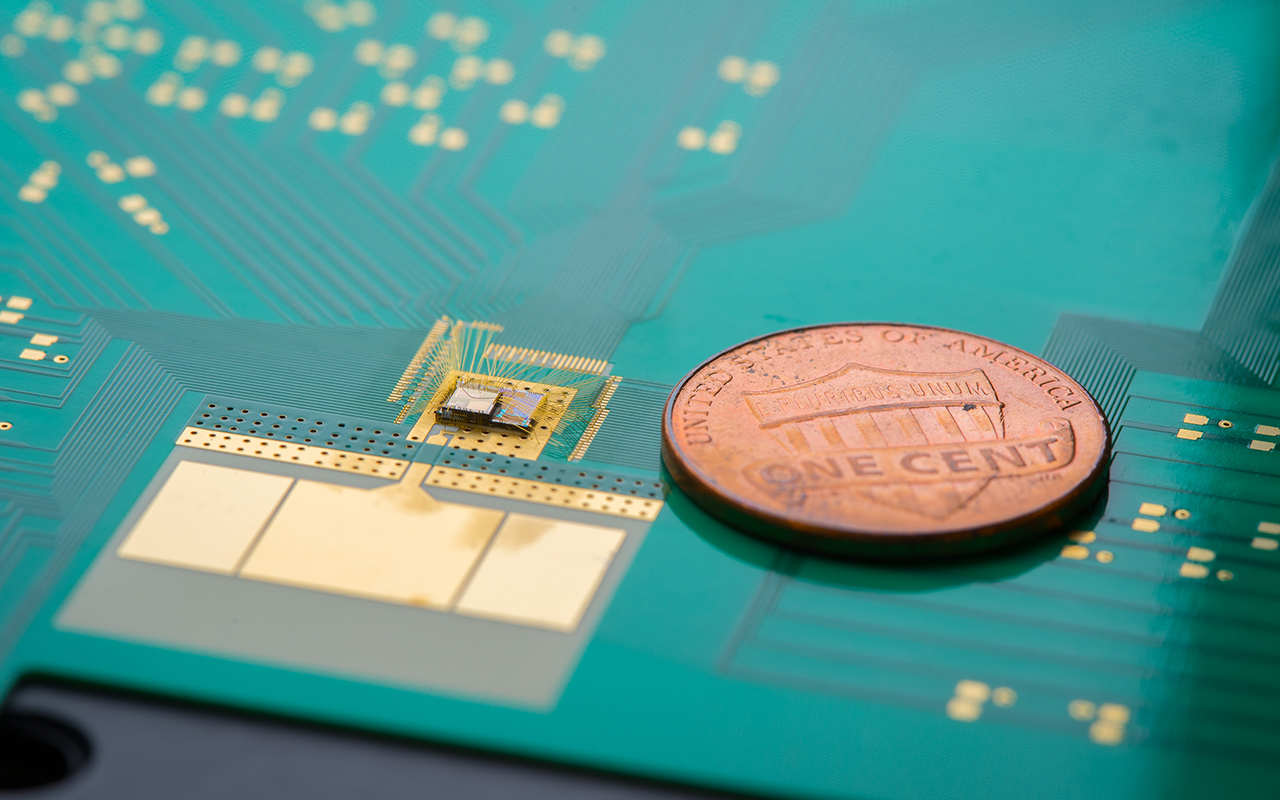2019/11/5 アメリカ合衆国・ハ ーバード大学ヴィ ース研究所

・ ハーバード大学エンジニアリングスクール SEAS と同大学のビィース研究所が、ソフト・アクチュエー ターで駆動する頑丈な RoboBee を開発。
・ 壁、床や他の RoboBee に衝突しても壊れない、ソフト・アクチュエーター起動のマイクロ・ロボットに よる飛行に初めて成功した。
・ マイクロ・ロボットの分野において、ソフト・アクチュエーターの使用による壊れにくいモバイルロボッ トの開発が進められているが、飛行に十分な電力密度の達成や制御が困難であることから、飛行ロボ ットでの応用が疑問視される。
・ 今回開発のソフト・アクチュエーターは、十分な電力密度とホバリング(空中停止)飛行の可制御性 を獲得。電場がかかると変形する優れた絶縁性を備えた柔らかな材料の誘電エラストマーから成る、 電力駆動のソフト・アクチュエーターをベースに開発した。
・ 新しいソフト・アクチュエーターでは、電極の導電性を改善し、過去に同様なロボットで使用した硬い アクチュエーターと同等の 500Hz での作動を可能にした。また、ロボットシステムのバックリングや不安 定性の課題には、縦方向に拘束する細線で軽量のエアフレームを構築することで対処した。
・ 同ソフト・アクチュエーターは、組み立てが容易で小型ロボットを代替。ソフト・アクチュエーター起動 の RoboBee の複数のモデルを作製して飛行能力を実証した結果、2 枚羽のモデルでは追加制御無く 離陸できた。4 枚羽のアクチュエーター2 個のモデルでは、一度のフライトで複数の衝突を克服し、障 害物のある環境で飛行できた。また、8 枚羽・4 個モデルでは、ソフト・アクチュエーター駆動の飛行マ イクロ・ロボットでは初となる、ホバリング飛行に成功。
・ 小型・軽量のロボットの利点の一つは外部衝撃への強さ。ソフト・アクチュエーターは、従来のアクチ ュエーション技術に比して衝撃の吸収に優れるため、追加的な利点を提供。捜索救難作業で瓦礫の 中を飛行するようなアプリケーションでの利用が考えられる。
・ 今後は、従来の飛行ロボット開発に比して大幅な遅れをとっている、同ソフトロボットシステムの効 率性の向上を目指す。
・ 同大学の Office of Technology Development が本プロジェクトに関連する知的所有権を保護。商業 化の機会を探求中。
URL: https://wyss.harvard.edu/news/robobee-powered-by-soft-muscles/
(関連情報)
Nature 掲載論文(アブストラクトのみ:全文は有料)
Controlled flight of a microrobot powered by soft artificial muscles
URL: https://www.nature.com/articles/s41586-019-1737-7
<NEDO海外技術情報より>
Abstract
Flying insects capable of navigating in highly cluttered natural environments can withstand in-flight collisions because of the combination of their low inertia1 and the resilience of their wings2, exoskeletons1 and muscles. Current insect-scale (less than ten centimetres long and weighing less than five grams) aerial robots3,4,5,6 use rigid microscale actuators, which are typically fragile under external impact. Biomimetic artificial muscles7,8,9,10 that are capable of large deformation offer a promising alternative for actuation because they can endure the stresses caused by such impacts. However, existing soft actuators11,12,13 have not yet demonstrated sufficient power density to achieve lift-off, and their actuation nonlinearity and limited bandwidth create further challenges for achieving closed-loop (driven by an input control signal that is adjusted based on sensory feedback) flight control. Here we develop heavier-than-air aerial robots powered by soft artificial muscles that demonstrate open-loop (driven by a predetermined signal without feedback), passively stable (upright during flight) ascending flight as well as closed-loop, hovering flight. The robots are driven by multi-layered dielectric elastomer actuators that weigh 100 milligrams each and have a resonance frequency of 500 hertz and power density of 600 watts per kilogram. To increase the mechanical power output of the actuator and to demonstrate flight control, we present ways to overcome challenges unique to soft actuators, such as nonlinear transduction and dynamic buckling. These robots can sense and withstand collisions with surrounding obstacles and can recover from in-flight collisions by exploiting material robustness and vehicle passive stability. We also fly two micro-aerial vehicles simultaneously in a cluttered environment. They collide with the wall and each other without suffering damage. These robots rely on offboard amplifiers and an external motion-capture system to provide power to the dielectric elastomer actuators and to control their flight. Our work demonstrates how soft actuators can achieve sufficient power density and bandwidth to enable controlled flight, illustrating the potential of developing next-generation agile soft robots.



